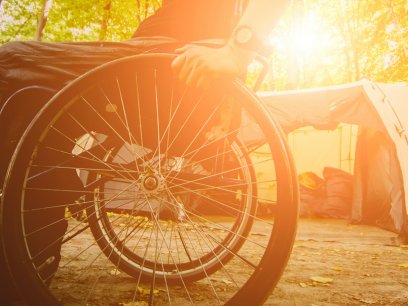
Dark Sky Week 2021
Did you know that the Milky Way, which once shown brilliantly in the night sky, is now no longer visible for a third of the planet’s population? With people spending more time outside than ever due to the COVID-19 pandemic, it’s important to find those spaces where we can connect with the wonders of the night sky, but this can be a tall task for those living in more urban areas.
Each year, the International Dark-Sky Association raises awareness about light pollution by hosting International Dark Sky Week in early April when the sky is darkest and the stars easiest to see. This year’s Dark Sky Week is April 5-12, 2021.
Light pollution is human-caused artificial light that changes the natural light levels of outdoor environments. Urban sky glow—the bright night sky you see over cities—is one of the biggest challenges it poses. Light trespass (where it is not needed or intended), glare (decreased visibility and visual discomfort), and clutter (confusing and excessive light sources) are other aspects of light pollution.
This wasted light has a negative impact on scientific research by astronomers. But you may not realize how light pollution also impacts ecosystems near you.
How Light Pollution Impacts Wildlife and Ecosystems
A dark environment is a vital resource for all living things. While humans are diurnal (active during the daytime), many animal species are nocturnal and have hearing, smell, and vision that is adapted to navigate nighttime environments. Nocturnal animals in North America include a wide range of species such as armadillos, bats, luna moths, mountain lions, and more.
Light pollution can disrupt the natural behaviors of many animals. Sea turtle hatchlings become disoriented from artificial light and head away from the ocean. Birds collide into buildings after being confused by lights or abandon roosting sites to avoid being spotted by predators in the light. Artificial light has also been shown to drive insect biodiversity loss.
It’s not just wildlife that is affected; most people live under light-polluted skies. (In fact, only 20% of Americans are able to see the Milky Way at night!) Scientific evidence points to light pollution as having a direct negative impact on human health by disrupting our circadian rhythm. Additionally, artificial lighting contributes to climate change by using large amounts of energy.
How To Reduce Light Pollution At Home
You can reduce light pollution at home by taking these easy, cost-effective, and quick steps recommended by the National Institute of Environmental Health Sciences.
- Turn off your house lights when they are not needed.
- Use yellow light bulbs that do not affect wildlife or attract insects.
- Keep lights away from wildlife habitat.
- Educate yourself and share your knowledge about light pollution within your local community.
The International Dark-Sky Association also provides a step-by-step guide to conduct an outdoor lighting assessment around your home with recommendations to make your home dark sky-friendly.
Find Dark Skies Near You
What makes a great night sky? In short: air quality, the right weather conditions, and protection from light pollution. The International Dark Sky Places conservation program recognizes communities, parks, and protected areas around the world. Visit their website to find a place to stargaze near you.

Currently, more than 30 National Park Service sites (along with dozens of state parks and other locations) have received the International Dark Sky Park designation. For many National Park sites, “half the park is after dark.” Rangers offer night sky programs ranging from moonlit hikes to telescope astronomy. Become a Junior Ranger Night Explorer from home to learn how to find the North Star, track the phases of the moon, explore night environments, and more.
You can also get started stargazing in your own backyard. The University of Texas McDonald Observatory’s StarDate website offers astronomy resources to help you spot meteor showers and other fascinating features of the night sky.
Educational Dark Sky Resources
Interested in learning more about the importance of dark skies and the challenges of light pollution? Consider these curriculum and activity guides from NEEF and other educational organizations that are working to better understand and protect the night sky.
- Bat and Moth
How do bats find their food in the dark? This interactive game helps kids understand how echolocation works.
- Spot the Station
NASA’s guide helps you locate the International Space Station as it passes overhead. It is the third brightest object in the night sky—and easy to spot if you know when to look!
- Night Skies of the U.S. National Park Service Story Map
The National Park Service takes you on a virtual tour of some of the United States’ most fascinating landscapes after dark, from Alaska’s northern lights to the remote night skies of Hawaii.
- Hands on the Land: Caves and Karst
This multimedia education program from the National Park Service in Colorado is part of NEEF’s Hands on the Land Educator Toolkit. It includes activities that help students understand the role of complete darkness and dark zones in cave ecosystems.
- Light Pollution Resource Library
National Geographic provides a conservation, earth science, and astronomy-focused resource library to help students in Grades 5-8 understand the global movement to reduce light pollution.
- GLOBE at Night
This program from the National Science Foundation and Association of Universities for Research in Astronomy’s NOIRLab invites citizen-scientists to measure the brightness of their local night skies and submit their observations. Other activity guides equip educators and students with resources to conduct a light audit at their school and make energy efficiency recommendations.
International Dark Sky Week offers an opportunity to reflect on the importance of our night skies. How will you get involved to help reduce light pollution?


